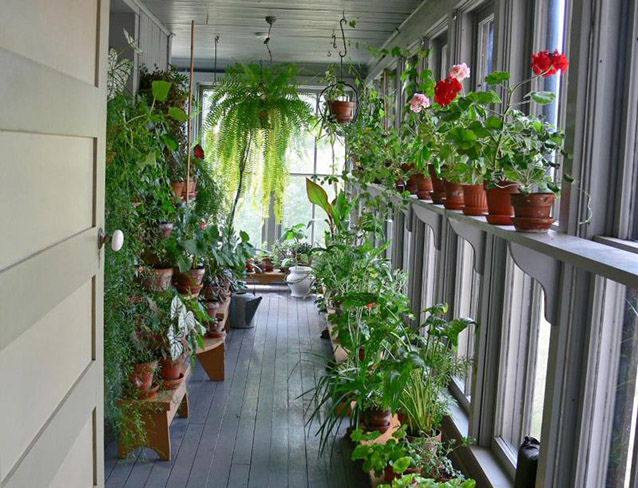Located in the Deer Lodge Valley of Montana, outside the town of Deer Lodge, the Kohrs Ranch House and Yard is a component landscape of the Grant Kohrs National Historic Site. The buildings of the Ranch, including the Ranch House, were primarily constructed by John Grant and Conrad Kohrs between 1860 and 1919 and slightly modified by grandson and ranch manager, Conrad Warren, in the 1930s.
Augusta Kohrs, the wife of “Cattle King” Conrad Kohrs, was instrumental in molding the Ranch House and its landscape’s Victorian style. The order and refinement that she imposed sharply contrasted with the outlying utilitarian ranch landscape.

NPS
The residence, along with its landscaped yard, is closely associated with the home ranch complex. In 1862, Grant built the original Ranch House. By contemporary standards, the residence was quite extravagant. Though typical of late nineteenth century urban residences, the architecture of Grant’s residence was unique for a Montana ranch house. The residential landscape is delineated by white picket fencing that encloses well maintained turf grass, cottonwood trees, specimen plantings, and a formal garden area.
Historically, the yard was divided into three distinct spatial zones – the front lawn, the service area, and the lower garden. The Service area was primarily a utilitarian space and functioned as a receiving ground for deliveries and as a secondary entrance to the house. By contrast, the front lawn and lower garden were formal spaces. Grid patterned cottonwood trees, brick pathways and irrigated turf define the front lawn, while more turf, raised flowerbeds, diverse ornamental plantings and narrow pathways characterize the lower garden.

NPS
The surrounding landscape functions as a physical extension of the residence’s interior living space. Moreover, the manicured residential yard provides a “buffer zone” that further delineates the private realm of the Ranch House from the rustic, "public" ranch landscape that lies outside the picket fencing. The imposing nature of the Ranch House and the refined residential landscape represent the Kohrs’ success and pride of accomplishment.
Closely tied to the establishment of the range cattle ranching industry in Montana and associated with the pioneers of western cattle ranching, the Ranch House and its associated landscape functioned as the nucleus of business transactions and social functions for the once extensive ranching operation. In its entirety, the Grant Kohrs National Historic Site is one of the last remaining great cattle ranches associated with open range cattle ranching from the turn of the 20th century in the United States.

NPS
The individuals who ran the cattle operations and inhabited the Ranch House -John Grant, John Bielenberg and Conrad Kohrs - were influential in the development of the western agrarian economy. Augusta Kohrs, the wife of “Cattle King” Conrad Kohrs, was instrumental in molding the Ranch House and its landscape’s Victorian style. The order and refinement that she imposed sharply contrasted with the outlying utilitarian ranch landscape. Though intimate in scale, the Ranch House landscape continues to impress upon visitors the success of the cattle enterprises developed by the ranch families.
Quick Facts
- Cultural Landscape Type: Designed
- National Register Significance Level: National
- National Register Significance Criteria: A, B, C
- National Historic Landmark
- Period of Significance: 1862-1934
Landscape Links
- Cultural Landscape Inventory park report
- Grant-Kohrs Ranch Cultural Landscape Report, Part I
- Grant-Kohrs Ranch Cultural Landscape Report, Part II
- National Register of Historic Places: Grant-Kohrs Ranch/Warren Ranch
- Library of Congress: HABS Documentation
- NPS Photo Gallery
- More about NPS Cultural Landscapes
Last updated: December 31, 2019
